
It's that time of year
May 29th, 2013
Newborn gosling time!
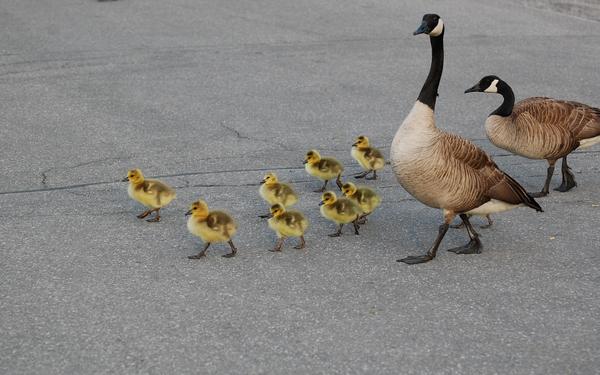
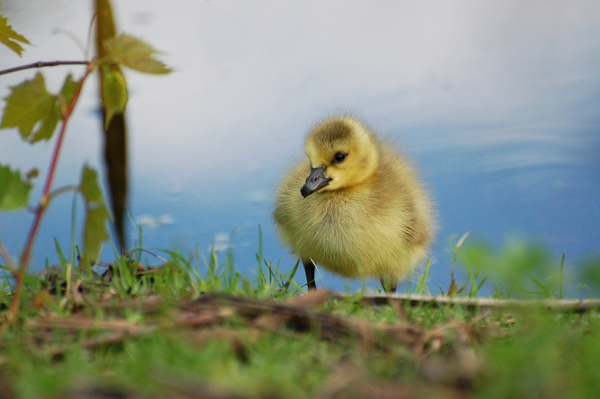
Virginia/Carolina Triplist
May 18th, 2013
Below is the triplist for my spring 2013 visit to Virginia and Cape Hatteras.
( Herein )
The stars of the show, of course, were my three lifers: Lesser Black-Backed Gull, Wilson's Phalarope, and American White Pelican. White Pelicans are uncommon in the east, huge birds with nine-foot wingspans--significantly more impressive than Outer Banks' common Brown Pelicans. This sighting even got mom excited. Unfortunately, it was very far away, so I have no decent photos to share. See here instead!
For Wilson's Phalarope, likewise, I have no good photos, so I refer you to this video of a group of phalaropes doing what they do best: spinning! Phalaropes' unique strategy for catching food is to create a little vortex in the water, drawing small insects and crustaceans up to the surface.
ETA: make that four lifers. I forgot about Yellow-Throated Vireo.
Birds of Hatteras and Dutch Gap
May 14th, 2013
Some non-gallery-worthy but interesting bird photos from Hatteras, plus one from Dutch Gap in Virginia.
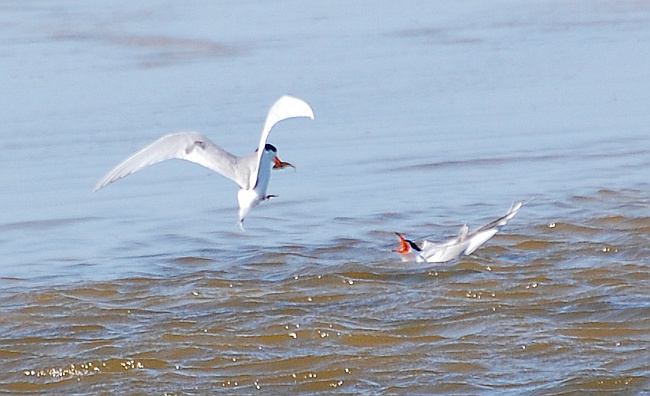
These are Forster's Terns, a very common sight in the Outer Banks, caught at an interesting moment. If it were late summer, and they weren't both in adult plumage, I'd say it was a parent feeding a fledgling. But this time of year it must be courtship. Perhaps it's a sort of role-playing, with the male showing off what a good provider he can be!
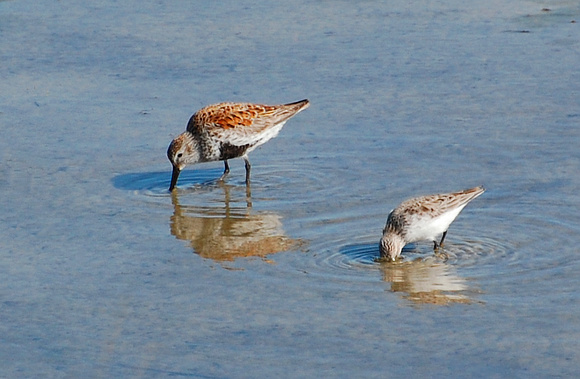
Dunlin (back left) and Semipalmated Sandpiper foraging in close company. Dunlins are common winter-resident sandpipers in the Outer Banks; the Semipalmated is just passing through.

A flock of Sanderlings. These birds can be found in large flocks on seashores in winter and migration, feeding on mole crabs and other denizens of the surf edge.
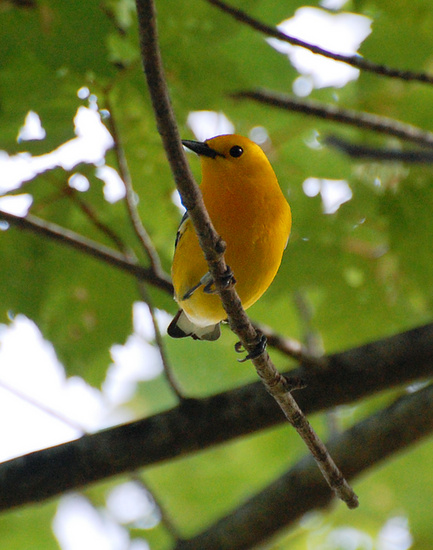
Prothonotary Warbler, a unique swamp-dwelling, hole-nesting, beady-eyed, intensely golden warbler. Alas, we don't have any in Ottawa--we're a little too far north. They are abundant at Dutch Gap. Their natural nest site would be a woodpecker hole in an old dead tree in a swamp, but increasingly they use manmade bird boxes built over water. I'm still waiting to get a photo that truly does justice to this beautiful bird.
Virginia Highlights
May 10th, 2013
A few photos from my visit in Virginia this spring.
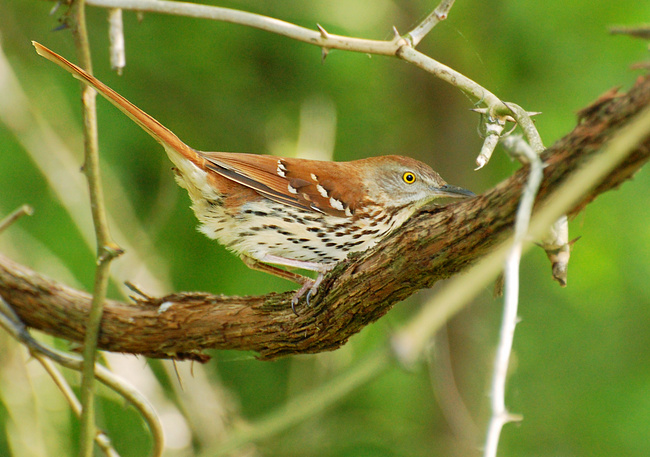
1680x1050 wallpaper
Brown Thrashers are elusive birds, normally. They like to stay hidden in thick bushes and underbrush--except when they rise into treetops to sing. (It's quite a song.) They only do it in spring, and only in the mornings and evenings. And my experience is that if I get too close at these times, they'll think better of it, dive back into the underbrush and continue singing from there.
But in Virginia, there are just so many of them that they seem to boil over the rim of their brushy habitat, spilling out into trails, clearings, and suburban yards. So it's not surprising that Chesterfield is where I finally took my first decent, wallpaperable photo of the species.
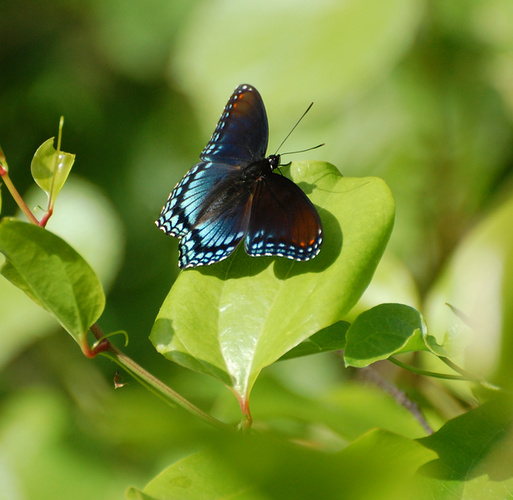
1680x1050 wallpaper
I was quite taken with this blue-winged butterfly I found at Dutch Gap. Turns out it's a subspecies of the plain old White Admiral, which we have in Ottawa. In this form it's called a Red-Spotted Purple, and its coloration mimics the poisonous Pinevine Swallowtail, encouraging predators to leave it alone. Since Pipevine Swallowtail doesn't occur further north (and thus is not familiar to local predators), there's no point in mimicking it here.
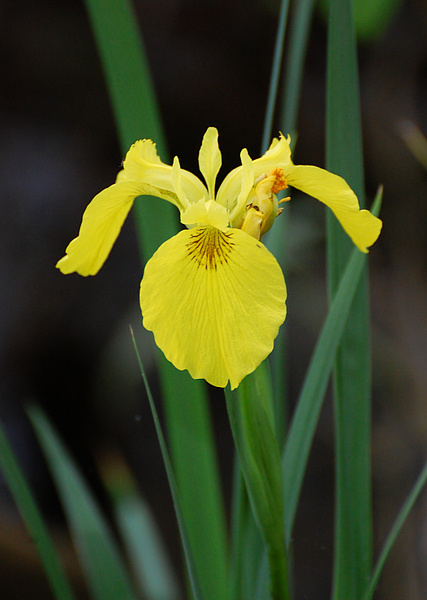
Lovely Yellow Irises were in bloom on the margins of wetlands.
Portrait of a Life Bird
May 9th, 2013
I'm back from a weeklong visit in Virginia with my folks. I had been hoping to catch the peak of warbler migration, but I either overshot or undershot the window of opportunity, or possibly both. The southern warblers were already in place on their breeding grounds (and, like so many warblers on their breeding grounds, difficult to see and impossible to photograph), while the northern ones were nowhere to be found except for Yellow-Rumpeds.
However, my mother and I had a great two-day trip to Cape Hatteras, where I got to experience spring shorebird migration, and found three lifers. Here's one of them.
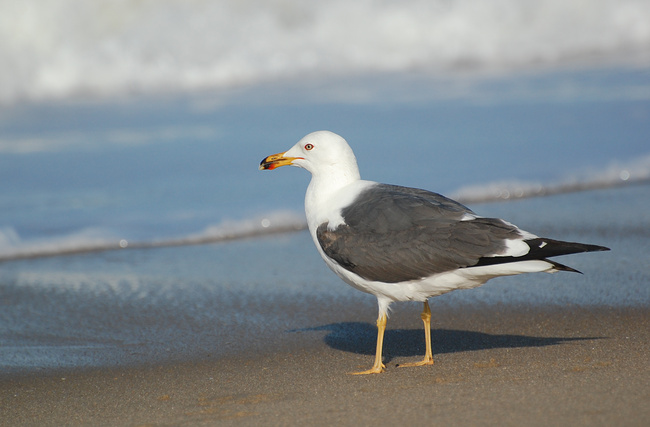
1680x1050 wallpaper
Lesser Black-Backed Gull had eluded me for almost six years. This is an Old World gull that winters along the east coast of North America. (Specifically, the Iceland population winters there.) Each winter we get a few of them in Ottawa. But the drill is always something like, "go to the Trail Road landfill, get out your spotting scope--oh, you don't have a spotting scope? Sucks to be you."
So imagine my surprise when I walked out on the beach and this fellow was right in front of me, as tame as can be!
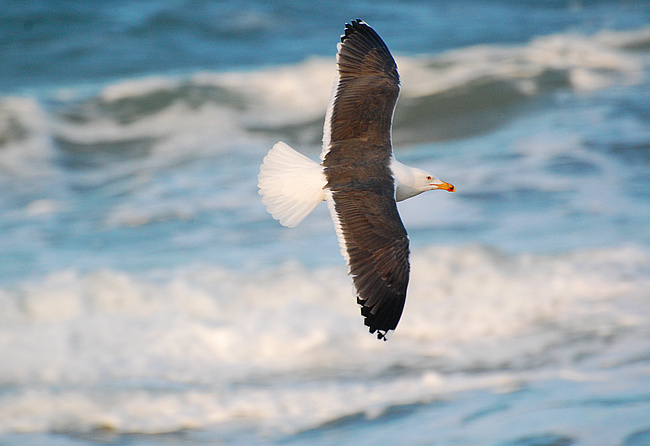
1680x1050 wallpaper

Even when he flushed, it seemed more out of annoyance than fear, and he only flew ten feet away before carrying on with his business. Maybe he was just worried I would steal his lunch of mole crabs.

1680x1050 wallpaper
The crashing wave caught fire in the sunset and made for a rather dramatic shot. I call this one "confidence" :-)
For ilanikhan
April 22nd, 2013
Shot at Shirley's Bay where the trail runs alongside a small farm. It's a Highland cow, I think.

Hoodies At Sunset
April 17th, 2013
A pair of migrant Hooded Mergansers made my evening today. These are usually fairly skittish ducks--indeed, the other three on the pond immediately took off when I arrived--but this pair stayed, and cordially ignored me. The longer I lingered the tamer they got.
As usual, these are all available at higher res on my gallery site, by clicking on the thumbnails.

1680x1050 wallpaper
Male hoodies flash their oversized white hoods to impress the ladies--although this particular female seems sufficiently impressed already!
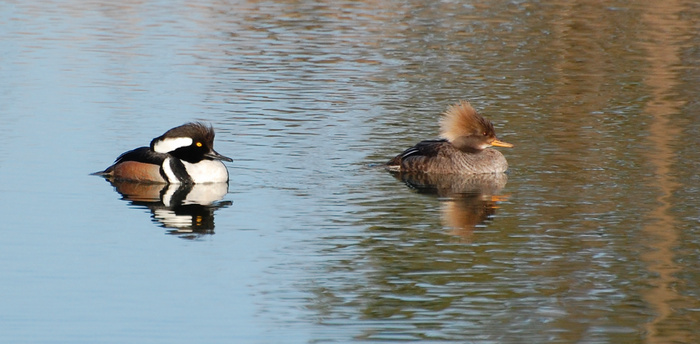
1680x1050 wallpaper
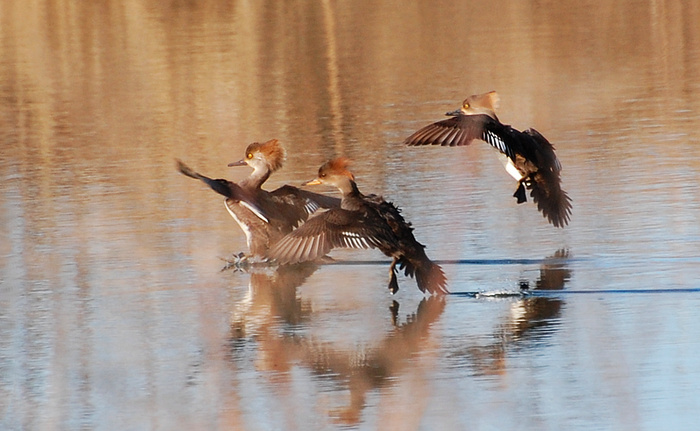
1680x1050 wallpaper
Three more coming in for a landing (perhaps the same three who flushed when I arrived?) The golden eyes and black bills on the first and third betray them as yearling males, not females. These may well be siblings. They probably won't breed until their second year, when the young males will acquire their mature plumage.
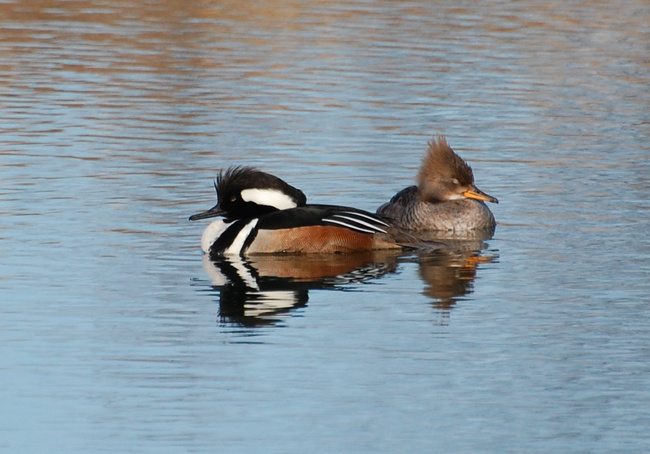
There's a special pleasure for a nature photographer when your subjects are relaxed enough to fall asleep in front of you.
Welcome back, Red-Winged Blackbirds
March 27th, 2013
A ton of snow and below-freezing weather have not stopped them from returning to their breeding grounds, and singing their hearts out. I never tire of them.
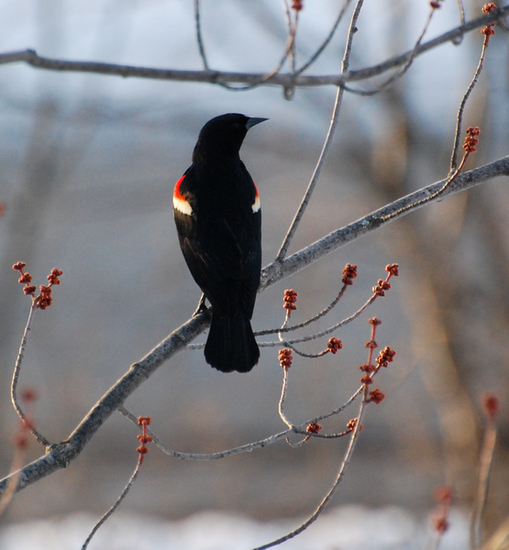
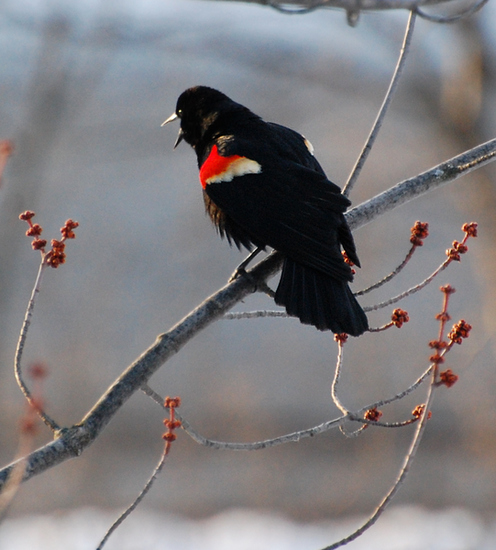
March Valley Grosbeaks
February 23rd, 2013
A flock of Pine Grosbeaks have been regulars at the March Valley Rd. bird feeders all winter, delighting nature-watchers. I often drive down there to look at them since MVR is right next to where I live. Whereas the flock I found in front of my husband's work in November was all drab, olive/gray females and juveniles, this flock has a large percentage of beautiful rose-red mature males.
These are best appreciated at high res, so click on the wallpaper links if you want to enjoy all the details.
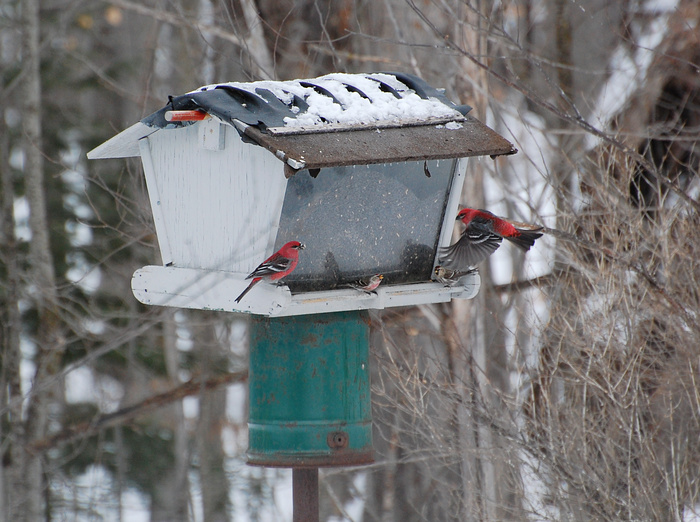
1680x1050 wallpaper
Take a closer look and you can see a Common Redpoll giving one of the grosbeaks a piece of his mind:
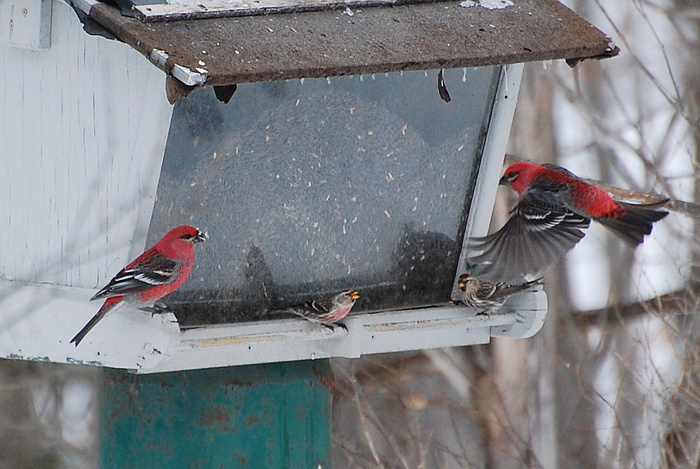
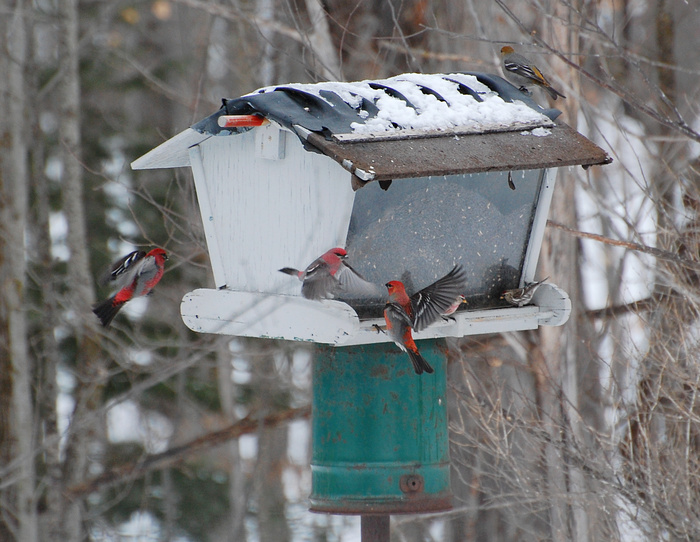
1680x1050 wallpaper
That's a female grosbeak on the top right.
Turkey Crossing
February 13th, 2013
I went to Trail Road looking for a wintering cowbird. Apparently people have been sprinkling birdseed at the landfill gates for him. I found this eating the seed instead!
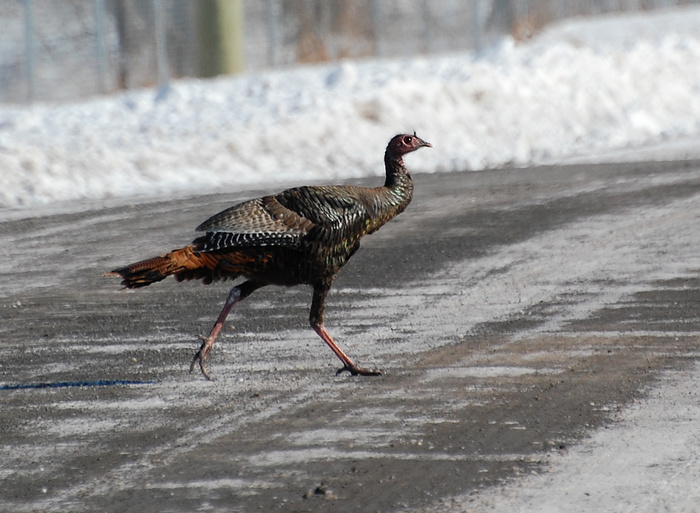
|
